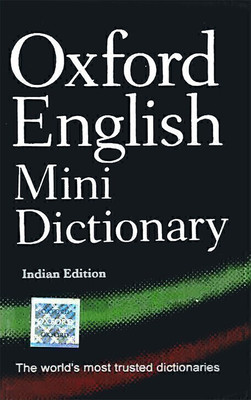
Advanced Java Programming For MSBTE ‘I’ Scheme Sem 5 Computer Engineering Program Group (CO/CM/CW/IF) Course Code :22517 Academic Year 2019-2020 (Paperback, Pankaj B. Brahmankar)
Price: Not Available
Currently Unavailable
Highlights
- Author: Pankaj B. Brahmankar
- 195 Pages
- Language: English
- Publisher: Tech-Neo Publications
Description
Unit Unit Outcomes (UOs)
(in cognitive domain)
Topics and Sub-topics
Unit - I : Abstract
Windowing Toolkit
(AWT)
(Refer chapter 1
1a. Develop Graphical user
interface (GUI) programs
using AWT components for
the given problem.
1b. Create Frame window with
the specified AWT
components.
1c. Arrange the GUI
components using specified
layout manager.
1d. Develop a program using
menu and Dialog Boxes for
the given problem.
1.1 Component, container, window, frame, panel.
1.2 Creating windowed programs and applets.
1.3 AWT controls and layout managers : use of
AWT controls : labels, buttons, checkbox,
checkbox group, scroll bars, text field, text
area.
1.4 Use of layout managers : flowLayout,
borderLayout, gridLayout, cardLayout,
gridbagLayout, menubars, menus, dialog
boxes, file dialog.
Unit - II : Swings
(Refer chapter 2)
2a. Differentiate between AWT
and Swing on the given
aspect.
2b. Develop Graphical user
interface (GUI) programs
using swing components for
the given problem.
2c. Use the given type of button
in Java based GUI.
2d. Develop Graphical user
interface (GUI) programs
using advanced swing
components for the given
problem.
2.1 Introduction to swing : Swing features,
Difference between AWT and Swing.
2.2 Swing Components : JApplet, Icons and
Labels, Text Fields, Combo Boxes.
2.3 Buttons : The JButton, Check Boxes, Radio
Buttons.
2.4 Advanced Swing Components : Tabbed
Panes, Scroll Panes, Trees, Tables, Progress
bar, tool tips.
2.5 MVC Architecture.
Unit - III : Event
Handling
(Refer chapter 3)
3a. Use delegation event model
to develop event driven
program for the given
problem.
3b. Use relevant AWT/swing
component(s) to handle the
given event.
3c. Use Adapter classes in Java
program to solve the given
problem.
3d. Use inner classes in java
program to solve the given
problem.
3.1 The delegation Event Model : Event sources,
Event listeners.
3.2 Event classes : The Action Eventclass, the
Item Event class, the Key Event class, the
Mouse Event class, the Text Event class, the
Window Event class.
3.3 Adapter classes.
3.4 Inner classes.
3.5 Event listener interfaces : ActionListener
Interface, ItemListener Interface,
KeyListener Interface, MouseListener
Interface, MouseMotion Interface,
TextListener Interface, WindowsListener
Interface.Unit - IV :
Networking Basics
(Refer chapter 4)
4a. Use InetAddress class to
know the IP address of the
given host name.
4b. Use URLConnection classes
to read and write data to the
specified resource referred
by the given URL.
4c. Develop program for Client /
Server communication
through TCP/IP Server
sockets for the given
problem.
4d. Write program to illustrate
the Client / Server
communication using
datagram protocol for the
given problem
4.1 Socket Overview : Client/Server, Reserved
Sockets, Proxy Servers, Internet Addressing.
4.2 Java and the Net : The Networking Classes
and interfaces.
4.3 InetAddress : Factory Methods, Instance
Methods.
4.4 TCP/IP Client Sockets : Whois
4.5 URL : Format, The URI Class.
4.6 URLConnection : TCP/IP Server Sockets.
4.7 Datagrams : Datagram Packet, Datagram
Server and Client.
Unit - V : Interacting
with Database
(Refer chapter 5)
5a. Choose JDBC or ODBC
depending on the given
application requirement.
5b. Explain function of the
given tier of JDBC
architecture for two
tier/three tier models.
5c. Use relevant type of JDBC
Driver for the specified
environment.
5d. Elaborate steps with
example to establish
connectivity with the
specified database.
5.1 Introduction to JDBC, ODBC
5.2 JDBC Architecture : Two tier and three tier
models
5.3 Types of JDBC Drivers
5.4 Driver Interfaces and Driver Manager class :
Connection InterfacenStatement Interface,
Prepared Statement Interface, ResultSet
Interface
5.5 The essential JDBC Program
Unit - VI : Servlets
(Refer chapter 6)
6a. Explain function of the
given method of Servlet life
cycle.
6b. Use relevant Generic servlet
to develop given web based
application.
6c. Use relevant HTTP servlet
to develop specified web
based application.
6d. Develop servlet for cookies
and session tracking to
implement the given
problem.
6.1 The Life Cycle of a Servlet
6.2 Creating simple Servlet : The Servlet API,
javax.servletPackage, Servlet Interface,
ServletConfig Interface, ServeletContext
Interface, ServletRequest Interface,
ServletResponse Interface, GenericServ let
Class
6.3 The
javax.servlet.httpPackage:HttpServletRequest
Interface, HttpServletResponse Interface,
HttpSession Interface, Cookie Class,
HttpServlet Class, HttpSessionEvent Class,
HttpSessionBindingEvent Class.
6.4 Handling HTTP Requests and Responses
Handling HTTP GET RequestsHandling
HTTP POST Requests.
6.5 Cookies and Session Tracking.
Read More
Specifications
| Book |
|
| Author |
|
| Binding |
|
| Publishing Date |
|
| Publisher |
|
| Edition |
|
| Standard |
|
| Number of Pages |
|
| Language |
|
| Subject |
|
| Specialization |
|
| University |
|
| Genre |
|
| Book Subcategory |
|
| Degree/Diploma |
|
| Term/Year |
|
| Term/Semester |
|
| Author Info |
|
| University/Subject |
|
Be the first to ask about this product
Safe and Secure Payments.Easy returns.100% Authentic products.
Back to top




